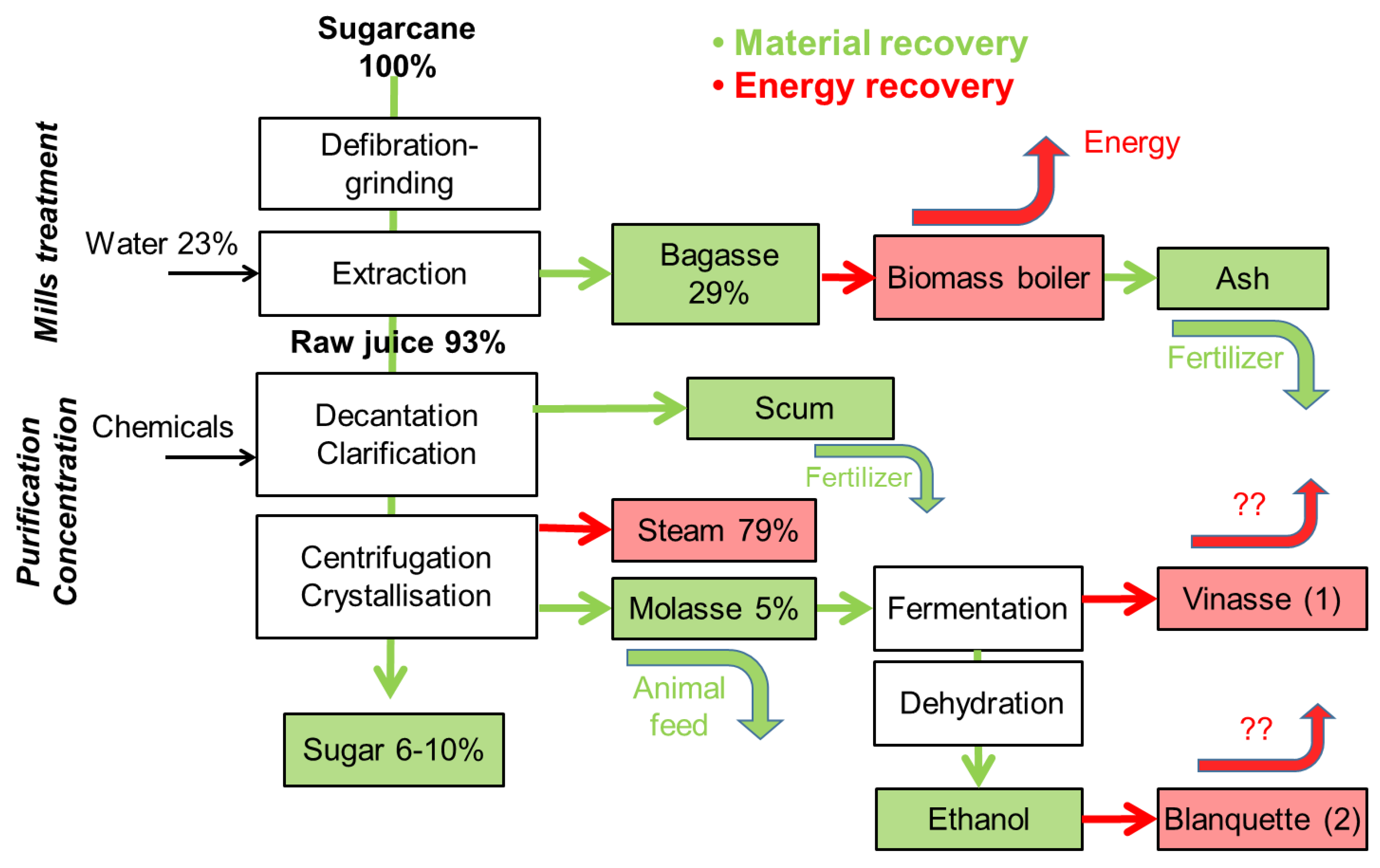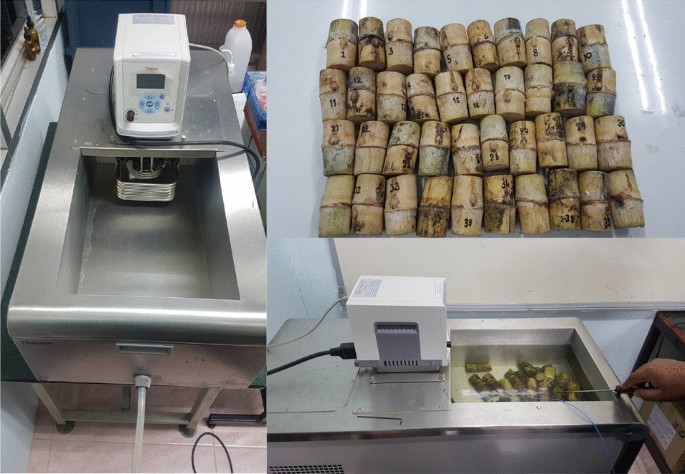Are Products From Sugarcane Truly Biodegradable?
Are Products From Sugarcane Truly Biodegradable?
Blog Article
Unlocking the Prospective of Products From Sugarcane: a Comprehensive Overview
The potential of sugarcane extends far beyond its standard use for sugar manufacturing. This guide discovers the complex applications of sugarcane, from power and biodegradable products to health products. By examining its journey from area to factory, it exposes how sustainable techniques can change waste into important resources. As sectors look for green remedies, the concern remains: exactly how can these developments improve our method to agriculture and manufacturing?

The Journey of Sugarcane: From Area to Factory
Sugarcane undergoes a remarkable makeover as it travels from lush areas to dynamic manufacturing facilities. In the areas, the high, environment-friendly stalks are harvested, typically by mechanical means or manual work. As soon as reduced, the sugarcane is swiftly transported to refining facilities to ensure optimum quality. At the manufacturing facility, the primary step entails squashing the walking cane to extract the pleasant juice, which includes sucrose. Products From Sugarcane. This juice is then filteringed system and cleared up, eliminating impurities. Following this, it goes through dissipation to concentrate the sugar material, bring about crystallization. The resulting sugar crystals are divided from the continuing to be molasses through centrifugation. The sugar is dried out and packaged for distribution. Throughout this journey, keeping high quality and efficiency is necessary, as the methods utilized straight effect the product's final quality. This transformation not just highlights the agricultural value of sugarcane however additionally its significant function in the international economy
Sugar and Its Derivatives: Greater Than Simply Sweet taste
The improvement of sugarcane right into polished sugar opens up the door to a wide array of items and applications that expand beyond simple sweet taste. Sugar and its by-products, such as molasses, brownish sugar, and glucose, play vital roles in various markets, including food, drugs, and cosmetics. In the food field, these ingredients improve flavors, improve appearance, and work as preservatives.Molasses, a by-product of sugar manufacturing, is rich in minerals and vitamins, making it an important ingredient in organic food and animal feed. Sugar, an easy sugar obtained from sugarcane, works as a significant power source in sports nourishment and is important in the manufacturing of confectionery. In addition, sugar by-products are made use of in fermentation procedures, adding to the manufacture of alcohols and other microbial products. Overall, the flexibility of sugar and its by-products highlights their value beyond plain sweetness in daily life.
Biofuels: Harnessing Power From Sugarcane

A substantial portion of worldwide biofuel production currently depends on sugarcane, acknowledged for its high energy return and effectiveness in converting sunlight into biomass. This exotic crop serves as a primary source for ethanol, an eco-friendly gas that can change gas in lorries. Sugarcane's capability to produce more ethanol per hectare than other feedstocks, such as corn, adds to its enhancing appeal among biofuel producers.The fermentation procedure of sugarcane juice or molasses produces ethanol, which can be blended with nonrenewable fuel sources to decrease greenhouse gas exhausts. Furthermore, by making use of the residual bagasse from sugarcane handling, energy can be created with burning, further boosting the sustainability of biofuel production. As nations seek to minimize climate adjustment influences, sugarcane biofuels use an appealing solution, strengthening energy protection and promoting agricultural sustainability while sustaining rural economic situations.
Naturally degradable Plastics: The Sustainable Alternate
Exactly how can markets shift to more sustainable methods in the face of growing plastic air pollution? One appealing solution exists in biodegradable plastics originated from sugarcane. Unlike typical petroleum-based plastics, these bioplastics supply an environmentally friendly alternative that can considerably reduce environmental impact. Made from renewable resources, sugarcane-based plastics break down much more quickly in different conditions, lessening land fill buildup and marine debris.The production of naturally degradable plastics not just addresses waste administration difficulties yet likewise lines up with the raising customer need for sustainable products. Industries embracing these materials can improve their brand name photo while adding to a round economy. Additionally, the change to naturally degradable choices urges development and investment in new modern technologies, promoting a greener sector landscape.As much more business identify the benefits of sugarcane-derived plastics, the potential for extensive adoption boosts, paving the way for an extra lasting future in packaging and item style.
Pet Feed and Fertilizers: Utilizing By-products
The results of sugarcane processing hold substantial capacity for both pet nutrition and organic plant foods. These results can be incorporated into pet feed, providing crucial nutrients while decreasing waste. In addition, they can work as effective natural plant food choices, enhancing soil health and wellness and promoting sustainable farming methods.
Results in Pet Nutrition
While sugarcane is largely valued for its sucrose material, its byproducts play a vital role in pet nourishment, especially in the form linked here of pet feed and plant foods. The fibrous residue referred to as bagasse, generated throughout the extraction of juice, works as a useful resource of roughage for livestock. This high-fiber material boosts food digestion and advertises general health in ruminants. In addition, molasses, a by-product of sugar refining, is abundant in energy and can be utilized to supplement pet diet plans, boosting palatability and nutritional worth. Moreover, vinasse, a fluid by-product from ethanol production, has vital nutrients and can be made use of as a feed Read More Here additive. In general, sugarcane by-products add significantly to lasting pet nutrition practices.
Organic Plant Food Options
Making use of sugarcane by-products prolongs past pet nutrition to include natural plant food options that profit agricultural methods. The coarse deposits, such as bagasse and filter cake, work as effective organic fertilizers, enriching dirt wellness and boosting crop yields. These products are rich in nutrients, including nitrogen, phosphorus, and potassium, important for plant development. When disintegrated, they boost dirt framework, water retention, and microbial task, cultivating a sustainable farming environment. Additionally, using sugarcane by-products for fertilization decreases reliance on artificial plant foods, promoting environmentally friendly agricultural methods. By reusing these byproducts, farmers can add to a round economic situation while enhancing their efficiency and minimizing waste. This approach exhibits cutting-edge approaches in lasting farming, leveraging sugarcane's full potential.
Wellness and Wellness: Nutritional Perks of Sugarcane
Many research studies highlight the nutritional advantages of sugarcane, making it a beneficial addition to a balanced diet regimen. Rich in crucial nutrients, sugarcane has considerable amounts of minerals, carbs, and vitamins, particularly vitamin Calcium, potassium, and c. These parts add to general wellness, sustaining immune function and bone strength.Moreover, sugarcane is an all-natural resource of anti-oxidants, which help combat oxidative anxiety and swelling in the body. Its high fiber content aids in food digestion, promoting intestine wellness and stopping constipation. Additionally, sugarcane juice has been connected to hydration and power replenishment, making it a superb option for athletes or those engaging in difficult activities.Furthermore, the glycemic index of sugarcane is relatively low, permitting for a more steady launch of energy, which might be beneficial for people managing blood sugar degrees. Overall, integrating sugarcane right into one's diet can use a renewing and nourishing choice for health-conscious individuals.
Technologies in Sugarcane Products: Future Trends and Opportunities
What developments lie in advance for sugarcane products as markets seek to improve sustainability and consumer allure? The future of sugarcane items is poised for significant advancements, driven by the demand for environment-friendly choices. Innovations in bio-based product packaging, stemmed from sugarcane, are gaining grip, providing a sustainable replacement for standard plastics. In addition, the exploration of sugarcane's bioactive substances is likely to cause new wellness supplements and practical foods, maximizing its all-natural benefits.Research right into fermentation processes may yield unique biofuels, better branching out sugarcane's utility. Additionally, the advancement of genetically changed sugarcane ranges assures increased returns and resistance to bugs, thus sustaining sustainable farming techniques. As customers come to be a lot more environmentally aware, the combination of openness in sourcing and production methods will certainly likewise play a necessary role fit the future of sugarcane products. Eventually, these developments can redefine sugarcane's position in worldwide markets.
Frequently Asked Inquiries
What Are the Ecological Effects of Sugarcane Farming?
The environmental impacts of sugarcane farming consist of deforestation, loss of biodiversity, dirt deterioration, and water pollution - Products From Sugarcane. Furthermore, extreme chemical and plant food usage can hurt environments, while monoculture techniques might bring about reduced resilience versus climate directory change

Just How Is Sugarcane Processed Into Different Products?
Sugarcane processing involves harvesting, crushing, and drawing out juice, which is after that made clear and focused. The resulting syrup can be fermented for ethanol or taken shape for sugar, while fibers are made use of for bioenergy and various other products.

Exist Any Type Of Health Threats Connected With Sugarcane Consumption?
The inquiry of health and wellness risks related to sugarcane usage highlights problems such as extreme sugar intake, potential allergies, and gastrointestinal problems. Moderation is necessary to mitigate these threats while enjoying its nutritional advantages.
What Are the Economic Advantages of Sugarcane Farming?
The economic advantages of sugarcane cultivation include job production, enhanced farming efficiency, and contributions to regional economies. In addition, it supports renewable resource production and offers various byproducts that can enhance productivity within diverse markets.
Exactly How Does Sugarcane Contrast to Other Renewable Resources?
Sugarcane, as a sustainable source, demonstrates greater efficiency in biomass production contrasted to numerous choices. Its adaptability permits different results, adding especially to sustainable techniques, economic development, and minimizing reliance on fossil gas. Glucose, a basic sugar acquired from sugarcane, serves as a considerable energy source in sports nourishment and is important in the manufacturing of confectionery. Sugarcane's capacity to produce more ethanol per hectare than other feedstocks, such as corn, adds to its boosting appeal among biofuel producers.The fermentation procedure of sugarcane juice or molasses produces ethanol, which can be combined with fossil gas to lower greenhouse gas emissions. Additionally, sugarcane juice has been linked to hydration and energy replenishment, making it an excellent option for athletes or those engaging in strenuous activities.Furthermore, the glycemic index of sugarcane is fairly low, permitting for a more gradual release of power, which might be valuable for people taking care of blood sugar degrees. In enhancement, the expedition of sugarcane's bioactive compounds is likely to lead to new wellness supplements and functional foods, capitalizing on its all-natural benefits.Research right into fermentation processes may produce unique biofuels, further expanding sugarcane's energy. The question of health risks associated with sugarcane usage highlights worries such as extreme sugar intake, prospective allergies, and gastrointestinal concerns.
Report this page